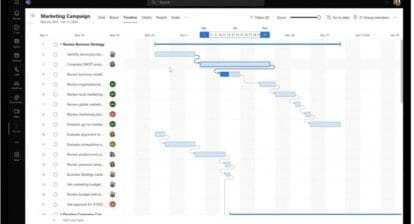Remote work, brought on by the Covid 19 Pandemic, makes up a significant amount of total work done in a lot of organizations. Most us have gotten used to it; however, it’s important to consider the heightened sense of fear stemming from ever-changing events and narratives, too. Within our brains, this can impact interactions with people and influence the success of human connectivity at work.
Your brain continually processes information and proposes behaviors to help you feel protected and thrive in the chaos of change. Dr. Andrew Huberman, a Stanford neurobiology professor, suggests that your brain power can be tricky because the mind’s primary purpose is to act as a stress-reactive machine. Its primary job is to keep you alive. Because of this, it is easy for your mind to lead you into reactive fear mindsets.
You may not often think of fear reactions when you are at work, but it is the basis for how you treat people especially in high stress or chaotic situations. In fact, you will likely see two types of mindsets emerge among managers and team members.
The Mindset of Scarcity
One fear pattern is that of scarcity, where there is only room for you and the people you choose to protect. Scarcity responses are different from physical scarcity in the workplace. A recent Harvard Business Review article suggested that you can promote improved innovation with physical scarcity. Managers can use planning efforts as creative prospects for real change. Team members can also make bolder decisions. This may be true, but let’s consider the implications. A scarcity fear response is a mental mindset that has a limiting purpose in your brain for making you believe that survival comes from protecting or hoarding resources that may or may not be available in the future.
In a fear pattern of scarcity, you may see a communication breakdown and an environment where people do not share information or nurture the team experience. The scarcity pattern is not an intentional wish to harm or reduce team cohesion, but rather an unconscious response to protect. Most managers do not deliberately start their day by thinking. “I’m going to disregard my employees today.” The scarcity minded manager may even feel as if they are good leaders because they achieve their inherent goal of feeling safe and protected.
The disadvantage of the scarcity pattern is that you cause fractures in the team since the intrinsic goal of protecting yourself contradicts the activities for creating a stable work environment that safeguards everyone. You also communicate differently when you are in a scarcity mindset. There is more of a chance of communication breakdown because the fundamental goal is to use the information to protect individuals instead of keeping team members informed and creating a safe space.
The Mindset of Abundance
The opposite of the scarcity fear behavior is that of abundance. This translates into activities where there is room for everyone, and all people are a valuable part of a team. There is a feeling of abundance even with limited resources because people work together to make the team strong. With an abundance response, you find that communication becomes a pivotal part of the team experience because you want to share information to keep everyone on the same level of understanding. The abundance mindset also helps you see different angles of a situation and consider the varying viewpoints of team members. Every opinion offers value, which adds to the overall team cohesion. Abundance recognizes that strength and safety come from everyone having equal value regardless of external circumstances. In his TEDx Talk, Naveen Jain, an award-winning CEO and entrepreneur, identified that the abundance mindset is crucial to management and workplace success.
The abundance response, which encourages maximum communication, may also help improve a company’s financial security. A recent Holmes Report found that companies with leaders who are highly effective communicators had 47% higher total returns to shareholders over the last five years than firms with leaders who are the least effective communicators.
Both mindsets are available, and you choose which direction to take. Even though our brains tend to lean toward a scarcity model to find safety, that is a short-sighted approach especially when in a position of management. If you can find ways to implement an attitude of abundance in your workplace, it won’t be about how many resources you have, but rather a sense of safety and protection that comes from everyone’s hard work when the skills and talents of each individual are valued. The abundance mindset does not mean that everyone will like each other or that there will not be conflict. It’s more about viewing work as a team event rather than a self-protective event. This is no small task in a fast-paced world with a fair amount of fear. In fact, it may take a little investment up front. The results won’t be immediate, but your effort will be worth it.
Here are a few questions to consider if you are looking to bring a more abundant mindset to your thinking:
- Do I feel like I am in control of my behaviors?
- Do I communicate information to all team members in a timely fashion?
- Do I feel like I am working for something bigger than myself?
- Do I like to hear different perspectives for solving a situation?
- Do I feel like I always have a choice?
Your consideration of these questions and recognition of the scarcity and abundance patterns is the springboard for success!







